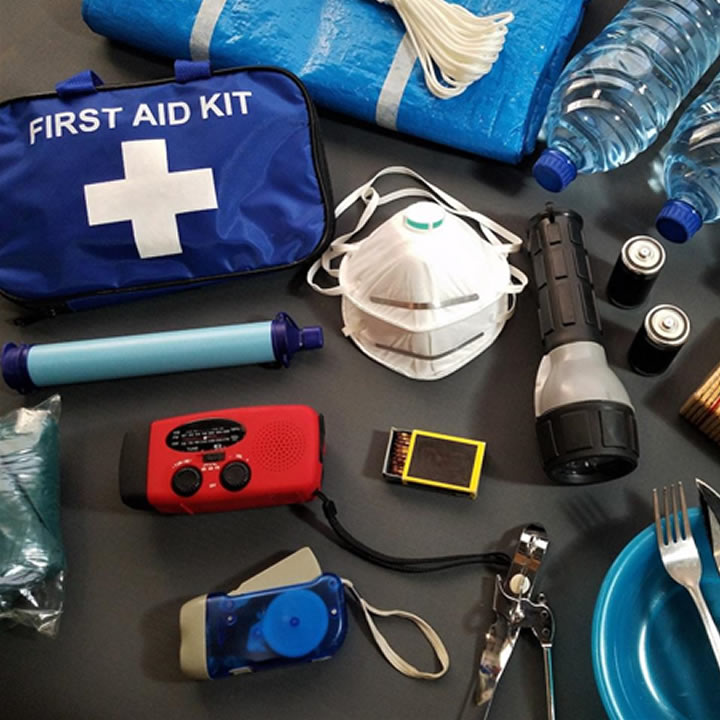Life is unpredictable. Whether you are hiking, camping, or preparing for an emergency, you never know what can happen. That is why it’s important to be prepared.
As the Covid-19 pandemic taught us, local supermarkets and stores may not operate at full capacity. Having survival resources is not just for those who enjoy outdoor activities. Before getting or building your survival kit, you will need to determine:
- The number of people who will use the kit. The number of supplies needed will be affected by how many people you are packing it for.
- Your outdoor experience. The more experienced you are, the fewer essentials you will need.
- Medical conditions. If you have any medical conditions, you will need to stock up on any medications you have.
- Location. When preparing a survival kit, your current location or where you will be going matters. Different climates require different clothes. Furthermore, some areas have animals, and you will need to prepare for that as well.
Now that you have an idea of what to look at as you pack let us take a look at what should go into your kit.
Backpack: Though some survivalists recommend a 5-gallon bucket instead of a backpack, the latter is easier and more practical. Everything in your survival kit will go into your backpack, and in an ideal situation, you would have something you can pick and go.
Look for a durable bag that can fit all your essentials and has comfortable straps. Remember you will be carrying it around. Comfort is key.
Water: Water is life and should not miss in your kit. The recommended amount of water you should carry is one gallon of water per person per day for three days. Do not forget water filtration tablets.
These will come in handy when you run out of water and need drinking water.
Food: This is one of the most crucial things you can pack, especially if you are inexperienced and do not know the lay of the land. If you can, pack three days’ worth of food, and do so. This should include:
- Canned foods.
- Energy bars
- Jerky
- Dried fruits
- You can use salt to even brush your teeth and clean wounds when hurt.
If you need to, add lightweight utensils like a plate and spoon. Otherwise, go for foods that require minimal cooking.
Knife: A knife is a survival tool necessary when planning for outdoor activities or an emergency. A swiss army knife is usually recommended because it has several tools you can use. However, the best survival knife brands are versatile enough for use in any situation.
Bottle
First Aid Kit: We all know that a first aid kit always comes in handy in various situations. It, therefore, makes sense to have it in a survival kit.
Your first aid kit should have:
- Bandaids, gauze, bandages, and medical tape for cuts and bruises.
- Medications such as painkillers, antihistamines, and any medications you may be taking
- Tweezers for removing pieces of glass or splinters
- Spirit or alcoholic wipes for cleaning wounds
- Ice pack
- Anti-bacterial gel
- Petroleum jelly
- Activated charcoal
- Cotton balls
- Thermometer
- Scissors
- Duct tape
Flashlight: A flashlight is key when it comes to maneuvering in the dark. Though most phones come with a flashlight, a battery-powered flashlight or a solar-charged rechargeable light is better because your phone may die, and you may be unable to charge it.
You can also choose to go with a headtorch, preferably one with batteries that last long.
Matches: When outdoors, you will need to start a fire either for warmth or to cook. Having matches will aid with this basic survival task. Waterproof matches are ideal if you do not have a lighter.
However, you should ensure you understand outdoor fire safety before lighting or building a fire.
Radio: In extreme conditions, your location may go off the grid, and you may be unable to communicate with others using a cellular device. This is where radio comes in. The radio will receive broadcasts.
Cash: If you are outdoors or in an emergency, you may be unable to access a bank. That is why you should carry cash with you. You never know what you may need to buy at the moment.
Sleeping Options: When building or buying a survival kit, think about how you would sleep if you found yourself outdoors. You can choose to go with a sleeping tent, pad, or bag.
Cellphone Charger and Power Bank: Since you will be carrying your cell phone, you should not forget the charger or power bank. You should also consider going for a rugged smartphone or satellite phone.
Clothes: You should pack clothes according to the climate you are in or going to. Layered clothes are best for both hot and cool climates.
Toiletries: Your kit should include toiletries like a toothbrush, soap, shampoo, insect repellant, sunscreen, and toilet paper.
Cards/Games: Whether you will be spending time alone or with others, cards or games will help pass the time and alleviate boredom.
Finally
Whether you choose to buy or make your own survival kit is at our discretion. Just ensure that it has the essentials to help you survive a number of days in an emergency. Remember to always carry extra batteries for items that use them.

